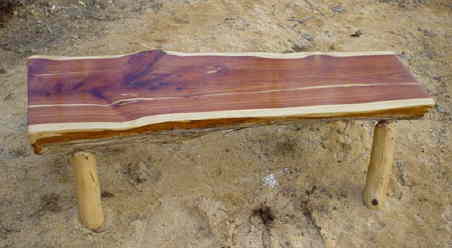Question
I have employed a sawyer to mill some logs for me. Most of them are walnut and I cut them from my own woods, so there are upper logs with (too many) knots, as well as good butt logs. If there is a relatively tight Y in the tree and the logs above the Y are decent size (say, greater than 12" inside the bark), I cut those, too. I've hauled the logs to his mill and am paying 30 cents a board foot for the cutting service. He has an old Wood-Mizer mill (manual turning, 24" maximum cut diameter, and about 16 feet maximum length).
I feel that there are too many thin boards (about 1 and 1/16th inches in the center but down to 7/8ths on the ends), and there are major wavy areas where there are larger knots. Sometimes this leads to wavy edges. He blames the thin ends on stress in the logs. I sell wood and these issues are going to create a large amount of handling and work for me, not to mention that I'll lose board feet for the thin parts, which I have little market for.
I don't want to have expectations that are at all unrealistic. At the same time, a friend with a newer model Wood-Mizer used to cut for me and he did not have these issues. Wavy cuts, when they seldom occurred, indicated a blade problem and walnut wasn't terribly hard to cut. If a log rose at all, you turned the log to relieve the stress on the other side.
If the problem here is something simple, such as the guy needs to replace blades more often or change something about the blades, then I will complain louder. If it is unavoidable, then it will do no good to complain. His claim was that 95% of the wood would plane to 3/4 inch when dry. Perhaps he isn't that far off, although I would say that more than 10% is mis-cut if you count wavy areas around knots, and even if you go with 5% of the surface area mis-cut, that translates into maybe 15 to 20% of the boards with mis-cut portions.
Forum Responses
(Sawing and Drying Forum)
From contributor B:
Sounds like the sawyer is rushing the work. I've read time and again on this forum that the key to even sawing is to take your time.
There is no reason that an older manual Mizer can't cut just as perfect lumber as a new hydraulic LT-70. It just might take a little longer. Also, the diameter capacity of an LT-30 is 32" easy and 36" with a hefty slab cut and/or notches in the log at the rails. The through and through capacity is 28". If this fella is having a hard time cutting straight in walnut, then there are issues with his guide adjustments, wheel bearings or blades.
No excuse for the sawyer to produce wavy boards, but maybe time for a sit down meeting with the sawyer to discuss your expectations. If he canít produce, find somebody else. A lot of mills produce 4/4 at 1-1/8" thickness to make up for shoddy sawing practices. If the sawyer doesnít know how to grade saw walnut, the extra 1/16" wonít cost a thing and maybe save you a few bucks.
My initial reaction to the thin boards was to suggest that he cut thicker, to which the sawyer responded that he would have to charge more. I would much prefer, for example, having one fewer board per log, than having to deal with two thin boards per log. I know it is a waste, but if a board is questionable thickness, I can't sell it without a significant discount. I usually end up planing them myself to see where they will come out, and that is time I don't have. These spots around knots also use time to haul them into the shop and plane out the heavy areas so that it will stack properly on sticks. It pretty much doubled the time to unload and stack.
I don't know the model number of this man's mill, but I suspect it is older than 1990s. From contributor L's comment "just not at 30 cents," I assume I can't expect a top quality job at that price. I know people cut for less, but I don't see how anyone can make very much money, especially after the expense of the equipment.
I have a sawyer who I think posts on this board coming to cut, but I ran out of room for logs and hauled some to this other guy. It looks like that was a mistake and I'll have to haul some back!
To the original questioner: You should expect better lumber quality than you're getting, and 30 cents a board foot is a fair rate. Age of the mill is irrelevant, it's the attitude and care of the sawyer that make a difference. You just happened upon a lazy sawyer. His statement that he would have to charge more to cut thicker is incredible - if anything, his board footage per hour would increase! I'd go get the remaining logs back and let a competent sawyer do the job.
What blade do you recommend?
